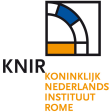Summary
- The geographical context for the research work of the project “Lanscape of Mobility and Memory” is today’s Roca/S. Foca, venued by the modern Municipium of Melendugno (LE). The area has proven to be a key site woven by interactional and long-lasting mobility threads from a period that certainly goes from II millennium B.C., when the settlement was the biggest harbor in relation to the traffics between the Egean-Micenean world and the central Mediterranean sea, since the early 2000, when S. Foca/Melendugno was the heart of the first migration flows originated after the cold war, and thought the Greek and Roman times (the mobility, dynamics and interactions of whom are well known in Puglia), thus through Medieval times and Post-Medieval world, when all of the eastern part of Salento was concerned by the arrival and settlement of Griko speakers, a community with strong religious, cultural and economic bonds with the trans-Adriatic world. The permit to conduct the survey has been granted by the Soprintendenza Archeologia, Belle Arti e Paesaggio per le province di Brindisi, Lecce e Taranto, in May 2019. ............................................................................................................................. Iacono, F. 2020. Roca Archaeological Survey [data-set]. FASTI Online Survey [distributor]. Permalink: http://www.fastionline.org/survey/site/AIAC_488
Project Dates
- 2019 - present
Periods
- No period data has been added yet
- 2600 BC
- 1700 BC
- 1550 AD
- The surveyed areas covered about 980 units with variable dimension, between 20x20 and the dimensions of a whole field (case of manufactures findings). The preliminary work on materials, conducted during the survey, has allowed us to gather, wash and catalogue in a preliminary state almost 2500 manufactured items of different varieties and different chronologies, from Epigravettian period to the first half of the past century. Thanks to the Photogrammetric survey have been identified and revealed both the rest of a small cave system used in medieval/post medieval times and a probable rock-out chamber tomb attributed to the Bronze Age (closely connected to one of the megalithic monuments in Melendugno’s territory). It’s also noteworthy the discovery of a quite large site attributed to medieval times, and the tempering of a prehistorical site previously unknown, findings that are going to be the object of research of the next campaigns. Beyond the specific findings, field work has allowed us to deepen the knowledge of the territory by increasing the capacity of predicament for the areas mostly subjected to erosion and the areas in which the extensive use of mechanical agricultural practices has deeply impacted the archaeological record, leaving almost no remains. Such a loss has on the other end has benefitted the general rhythm of the work, allowing us to cover a much larger area. Overall the land-strip close to the Tamari basin resulted to be the most densely occupied whilst the inner plateau for the moment seems to be hardly occupied or hardly damaged by erosion. In the initial phase of the project surely the survey has been the aspect of research that has taken the most amount of time workwise. The workflow on the field was greatly facilitated using technical digital supports for the registration of data, relatively to both visibility of field and the quantification of the founded artefacts. The work has been divided into two teams, one led by myself and the other led by my partner, dott. Spagnolo. The data-collection phase has been handled through a cloud synchronized database so that every member of the expedition could reach the data using theirsmart phone. The spatial cartographical data were inserted directly on the field through a topographical application by the two team’s supervisors. Three areas have been identified, from the Bronze Age site of Rocavecchia to the inner part of the land, specifically the first one was delimited by the Protostoric lagoon, the second area was near the mostly noticeable drop of height and the last area over the most recognizable limestone plains. As initially planned, the tree investigated areas were championed differently based on their distance from the main site, with a 60% coverage for the first site (nearest to the coast), and a 20% coverage for the inner zones. Lower samplings (scouts being distance more than 10m from one another) have been set aside for now, due to immediate comparability of the quantity of materials founded. A considerable amount of surveyor's units, located as distant as possible from each other, have been investigated in order to obtain a first comprehensive overview of the landscape.
Other Comments
- Director: Francesco Iacono (Univ. of Bologna); Field directors: Francesco Iacono (Univ. of Bologna), Vincenzo Spagnolo (Università di Siena); Other team members: Wieke de Neef (Univ. of Ghent, GIS); Roberta Mentesana (Univ. of Barcelona, Petrology)
- A) What settlement patterns and dynamics can be recognized through time in the hinterland of mobility hubs? B) How was the use of the landscape influenced by major trends of mobility? 1) Is the same range of imported and locally imitated material recovered in primary connection nodes similarly present also in the surrounding territory? 2) Is there an influence on the way landscape is occupied in terms of growth, decrease, or change of the settlement pattern or are their effects negligible? C) What was the role played by inter-visibility and spatial association with sites and structures belonging to previous periods, and thus arguably by memory, in shaping the relationship between local people and their landscape? Was this aspect affected in periods of intense human mobility? D) How does people’s movement affect the memory of the landscape? How have current inhabitants of mobility areas conceptualised their landscape in response to movement of people?
Director
-
Director
- Francesco Iacono




![Edit [ed]](/survey/skins/fastisur/images/plusminus/edit.png)
![View [view]](/survey/skins/fastisur/images/plusminus/view.png)

![Download [PDF]](/survey/skins/fastisur/images/results/download_sml.png)